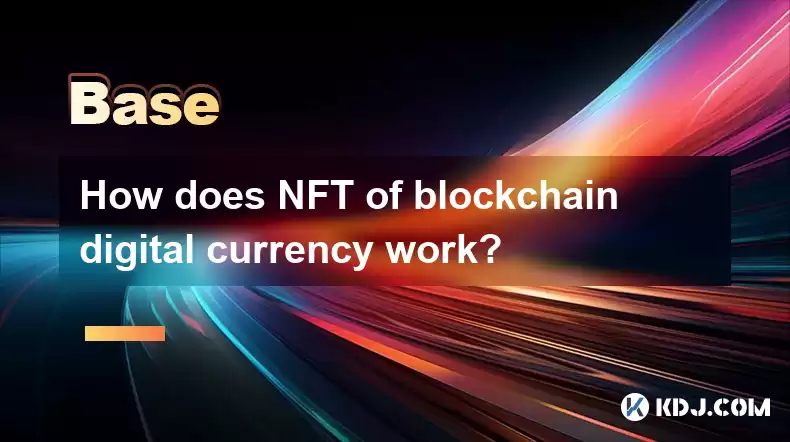-
 Bitcoin
Bitcoin $113900
-1.39% -
 Ethereum
Ethereum $3517
-4.15% -
 XRP
XRP $3.009
1.59% -
 Tether USDt
Tether USDt $0.9997
-0.04% -
 BNB
BNB $766.8
-1.41% -
 Solana
Solana $164.6
-2.38% -
 USDC
USDC $0.9998
-0.02% -
 TRON
TRON $0.3277
0.65% -
 Dogecoin
Dogecoin $0.2023
-1.67% -
 Cardano
Cardano $0.7246
0.05% -
 Hyperliquid
Hyperliquid $38.27
-4.77% -
 Sui
Sui $3.528
-0.52% -
 Stellar
Stellar $0.3890
-0.73% -
 Chainlink
Chainlink $16.16
-2.69% -
 Bitcoin Cash
Bitcoin Cash $539.9
-4.38% -
 Hedera
Hedera $0.2425
-2.00% -
 Avalanche
Avalanche $21.71
-0.97% -
 Toncoin
Toncoin $3.662
5.73% -
 Ethena USDe
Ethena USDe $1.000
-0.02% -
 UNUS SED LEO
UNUS SED LEO $8.964
0.35% -
 Litecoin
Litecoin $107.7
2.33% -
 Shiba Inu
Shiba Inu $0.00001223
-0.40% -
 Polkadot
Polkadot $3.617
-0.97% -
 Uniswap
Uniswap $9.052
-2.49% -
 Monero
Monero $295.1
-3.79% -
 Dai
Dai $0.9999
0.00% -
 Bitget Token
Bitget Token $4.315
-1.85% -
 Pepe
Pepe $0.00001060
0.11% -
 Cronos
Cronos $0.1342
-2.72% -
 Aave
Aave $256.0
-0.87%
How does NFT of blockchain digital currency work?
NFTs, unique digital assets, leverage blockchain technology for verifiable ownership. Minting on platforms like Ethereum or Solana records ownership transparently, facilitated by smart contracts and marketplaces like OpenSea.
Mar 11, 2025 at 05:50 am

Key Points:
- NFTs leverage blockchain technology to create unique, verifiable digital assets.
- The process involves minting an NFT on a blockchain network.
- Ownership and transactions are recorded transparently on the blockchain.
- Different blockchains offer varying functionalities and fees for NFT creation and trading.
- Understanding smart contracts is crucial for comprehending NFT functionality.
- Several marketplaces facilitate the buying, selling, and trading of NFTs.
How Does NFT of Blockchain Digital Currency Work?
Non-Fungible Tokens (NFTs) are unique digital assets representing ownership of something specific, be it artwork, collectibles, in-game items, or even virtual real estate. Unlike cryptocurrencies like Bitcoin or Ethereum, which are fungible (interchangeable), each NFT is distinct and cannot be replaced with another. This uniqueness is secured and verified using blockchain technology.
The foundation of NFT functionality lies within blockchain technology. A blockchain is a distributed, immutable ledger that records all transactions across a network of computers. This decentralized nature ensures transparency and security, preventing fraud and tampering with ownership records. When an NFT is created, this event—the minting process—is recorded on the blockchain. This record permanently links the NFT to its owner.
The process of creating an NFT, or minting, usually involves several steps. First, you need to choose a blockchain platform compatible with NFTs. Popular choices include Ethereum, Solana, and Tezos, each with its own strengths and weaknesses regarding transaction fees and speed. Next, you will need a digital wallet to store your cryptocurrency and your newly minted NFT. Then, you'll use a platform to create your NFT. This might involve uploading your digital asset and setting the necessary metadata. Finally, you pay a transaction fee (gas fee) to complete the minting process and register your NFT on the blockchain.
- Choose a blockchain network (e.g., Ethereum, Solana).
- Select a digital wallet compatible with the chosen network.
- Create your digital asset (image, video, audio, etc.).
- Use a minting platform to upload your asset and set metadata (description, attributes).
- Pay the network fee to complete the minting process.
Once minted, the NFT’s ownership and transaction history are permanently recorded on the blockchain. This ensures transparency and verifiability. If you decide to sell your NFT, the transaction will also be recorded on the blockchain, updating the ownership details. This immutable record provides a clear audit trail, eliminating disputes over ownership.
Smart contracts play a vital role in the functionality of NFTs. A smart contract is a self-executing contract with the terms of the agreement between buyer and seller directly written into lines of code. This eliminates intermediaries and automates the transfer of ownership when certain conditions are met, such as payment confirmation. For example, a smart contract might automatically transfer ownership of an NFT to a buyer upon successful cryptocurrency payment.
The buying, selling, and trading of NFTs occur primarily on NFT marketplaces. These platforms act as intermediaries, connecting buyers and sellers. Popular marketplaces include OpenSea, Rarible, and SuperRare. These marketplaces typically charge fees for transactions, similar to how online auction sites operate. Each marketplace might specialize in certain types of NFTs or have different features.
The choice of blockchain significantly impacts the NFT's functionality and cost. Ethereum, a pioneer in NFT technology, has a large and established community, but its transaction fees (gas fees) can be high. Other blockchains like Solana and Tezos offer lower fees and faster transaction speeds, attracting creators and buyers seeking more cost-effective options. The selection of the appropriate blockchain often depends on the specific needs and budget of the user.
NFT technology extends beyond simple digital art. Its applications span various fields, including gaming, virtual worlds, and digital identity. In-game items can be represented as NFTs, providing verifiable ownership and allowing players to trade them. Similarly, virtual real estate in metaverses can be tokenized as NFTs, allowing for ownership and trading of virtual land. Even digital identities can be secured and verified using NFTs, opening possibilities for secure online interactions.
Frequently Asked Questions:
Q: What is the difference between an NFT and a cryptocurrency?
A: Cryptocurrencies like Bitcoin are fungible, meaning one unit is interchangeable with another. NFTs, on the other hand, are non-fungible, meaning each NFT is unique and cannot be replaced with another. Cryptocurrencies are primarily used as a medium of exchange, while NFTs represent ownership of a specific digital or physical asset.
Q: Are NFTs only for digital art?
A: No, NFTs can represent various digital and even physical assets, including collectibles, in-game items, virtual real estate, music, and more. The underlying technology allows for the tokenization of ownership for a wide range of assets.
Q: How secure are NFTs?
A: The security of NFTs relies on the security of the underlying blockchain. The decentralized and immutable nature of blockchains makes it difficult to tamper with transaction records or claim ownership fraudulently. However, the security of your NFT also depends on the security of your digital wallet.
Q: What are gas fees?
A: Gas fees are transaction fees paid to miners or validators on a blockchain network to process transactions. These fees vary depending on the blockchain network and network congestion. Higher network activity often leads to higher gas fees.
Q: How do I choose an NFT marketplace?
A: Choosing an NFT marketplace depends on your needs and preferences. Consider factors like the types of NFTs offered, transaction fees, user interface, and the platform's reputation and security measures. Research different marketplaces to find one that suits your requirements.
Q: What are the risks involved in investing in NFTs?
A: The NFT market is volatile and speculative. The value of NFTs can fluctuate significantly, and there's a risk of losing your investment. Additionally, the market is susceptible to scams and fraudulent activities. Thorough research and due diligence are essential before investing in NFTs.
Disclaimer:info@kdj.com
The information provided is not trading advice. kdj.com does not assume any responsibility for any investments made based on the information provided in this article. Cryptocurrencies are highly volatile and it is highly recommended that you invest with caution after thorough research!
If you believe that the content used on this website infringes your copyright, please contact us immediately (info@kdj.com) and we will delete it promptly.
- Solana, Axiom Exchange, and Revenue: Navigating the Future of DeFi
- 2025-08-02 12:50:12
- Cardano (ADA) and Altcoin Gains: Navigating the Crypto Landscape
- 2025-08-02 12:55:11
- Bitcoin's Bearish Momentum: Fakeout or the Real Deal?
- 2025-08-02 12:30:12
- Ethereum's Rocky Climb: Analysts Eye New ATH Despite Recent Dip
- 2025-08-02 10:30:11
- Ethereum Price, ETF Inflows, and ETH Tokens: What's Driving the Market?
- 2025-08-02 10:50:12
- Ethereum, ADA, and Price Support: What's Next for These Crypto Titans?
- 2025-08-02 10:50:12
Related knowledge

What is the difference between CeFi and DeFi?
Jul 22,2025 at 12:28am
Understanding CeFi and DeFiIn the world of cryptocurrency, CeFi (Centralized Finance) and DeFi (Decentralized Finance) represent two distinct financia...

How to qualify for potential crypto airdrops?
Jul 23,2025 at 06:49am
Understanding What Crypto Airdrops AreCrypto airdrops refer to the distribution of free tokens or coins to a large number of wallet addresses, often u...

What is a crypto "airdrop farmer"?
Jul 24,2025 at 10:22pm
Understanding the Role of a Crypto 'Airdrop Farmer'A crypto 'airdrop farmer' refers to an individual who actively participates in cryptocurrency airdr...

What is the difference between a sidechain and a Layer 2?
Jul 20,2025 at 11:35pm
Understanding the Concept of SidechainsA sidechain is a separate blockchain that runs parallel to the main blockchain, typically the mainnet of a cryp...

What is the Inter-Blockchain Communication Protocol (IBC)?
Jul 19,2025 at 10:43am
Understanding the Inter-Blockchain Communication Protocol (IBC)The Inter-Blockchain Communication Protocol (IBC) is a cross-chain communication protoc...

How does sharding improve scalability?
Jul 20,2025 at 01:21am
Understanding Sharding in BlockchainSharding is a database partitioning technique that is increasingly being adopted in blockchain technology to enhan...

What is the difference between CeFi and DeFi?
Jul 22,2025 at 12:28am
Understanding CeFi and DeFiIn the world of cryptocurrency, CeFi (Centralized Finance) and DeFi (Decentralized Finance) represent two distinct financia...

How to qualify for potential crypto airdrops?
Jul 23,2025 at 06:49am
Understanding What Crypto Airdrops AreCrypto airdrops refer to the distribution of free tokens or coins to a large number of wallet addresses, often u...

What is a crypto "airdrop farmer"?
Jul 24,2025 at 10:22pm
Understanding the Role of a Crypto 'Airdrop Farmer'A crypto 'airdrop farmer' refers to an individual who actively participates in cryptocurrency airdr...

What is the difference between a sidechain and a Layer 2?
Jul 20,2025 at 11:35pm
Understanding the Concept of SidechainsA sidechain is a separate blockchain that runs parallel to the main blockchain, typically the mainnet of a cryp...

What is the Inter-Blockchain Communication Protocol (IBC)?
Jul 19,2025 at 10:43am
Understanding the Inter-Blockchain Communication Protocol (IBC)The Inter-Blockchain Communication Protocol (IBC) is a cross-chain communication protoc...

How does sharding improve scalability?
Jul 20,2025 at 01:21am
Understanding Sharding in BlockchainSharding is a database partitioning technique that is increasingly being adopted in blockchain technology to enhan...
See all articles

























































































